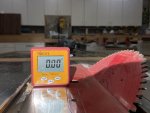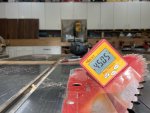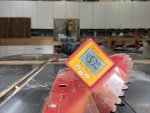- Messages
- 11,636
- Location
- Constantine, MI
Some time back, based on a recommendation I got here on the forum, I retired my Wixey angle finder (which ate expensive batteries like nobody's business) and went with the Beal Tool Tilt Box II. Overall I've been happy with it but it has an idiosyncrasy that drives the OCD part of me to distraction. I can zero out on the table topp and then, depending on which of the three magnetized sides I affix to the blade, I can get three different readings. I contacted Beal and did get a quick response but it was somewhat less thatn I expected.
My note to him - " This has been so since I purchased the unit. I compensate by always using the same face when checking angles. However, I'm guessing this is not the way it should work. Should not all three faces give the same information? See attached. "
His reply - "I think they probably should but don't know what you could do about it.
Thanks,
JR"
Like I said, less than I expected.




My note to him - " This has been so since I purchased the unit. I compensate by always using the same face when checking angles. However, I'm guessing this is not the way it should work. Should not all three faces give the same information? See attached. "
His reply - "I think they probably should but don't know what you could do about it.
Thanks,
JR"
Like I said, less than I expected.




